
Most bands have a shelf life, purchase especially the ones who are hyped. Although a review like “The first band in a decade to lay serious claim to the Stone Roses throne” (The Guardian) can put you in good stead when you’re starting out, it can also set you en route to Destination Doomsville, burdening you with a reputation you simply can’t live up to.
British indie rock band Delays have so far managed to fend themselves of this curse. They have gone from strength to strength following the release of their debut album ‘Faded Seaside Glamour’ in 2004 to critical acclaim. Six years on, the four-piece are set to release their forth album, ‘Star Tiger, Star Ariel’ produced by Duncan Lewis who worked on their first album.

In a tiny room in the basement of music venue Water Rats in King’s Cross – decorated with blue and white fairy lights, a few old shelves and an enormous abstract painting – I join spiritual front man Greg Gilbert (GG) and down-to-earth drummer Rowley (R) before they take the stage at their sold out London gig to talk about their latest album, town criers and livin’ it up at Glastonbury over lime-flavoured Doritos…

How would you describe your new album in three words?
GG: Rustic, organic and psychedelic
R: I don’t like organic, it sounds a bit vegetably
GG: OK then; rustic, psychedelic and melancholic
R: Yeah, that sounds better – I second that emotion
GG: Or we could say “Our. Best. Album” – three words – succinct and to the point

What has inspired your latest album?
GG: Our last album had a lot of orchestral arrangements and there was a real urge between the four of us to strip the sound back and become a four-piece band again. With that in mind we started to go for long drives at night along the New Forest, making music to soundtrack the journey. We built the record from the ground up and it was just a case of being inspired by the environment opposed to any concerns about writing a single. We banned the words ‘single’ and ‘commercial’ from the studio.
R: We used to do it all the time; we would say: “I think this one’s a single”, which makes you approach making music differently. We spent a lot of time in Southampton, reacquainting ourselves with the city and each other again, which does come through on the record. The result is a much more personal and honest sound.
How have you found the audience’s response to the new material so far?
GG: We’ve found that people who wouldn’t have liked our previous stuff have been positive about the new album. They’re responding to the fact that it’s a more personal record – they’re getting from it more from us as individuals then a commodity. So far, the people who have heard our record think it’s the best one.
R: The new tracks are going down just as well as our old stuff. It’s a great feeling when the roar for a new song is as enthusiastic as for an old song, like ‘Long Time Coming’.
How do you think your sound has changed over the years?
GG: The first album sounds like a beach, the second album sounds like a club, the third album sounds like a festival and this album sounds like the forest, with the roots growing underneath the city at night making the buildings shake whilst you’re asleep. The first album is quite delicate because we recorded that before we toured so there was a certain amount of discovery. For the second album we worked with Graham Sutton who is genius producer; he brought a real club edge to the record which had a raw but beautiful precision about it.
R: We wrote the third album with the approach that it would be amazing at a festival; it’s big and bombastic and sounds like you’re playing it to 100,000 people rather then making a record for headphones.
GG: This album’s much more abstract; you can hear this on a beach in Scandinavia at two in the morning with mist flowing in the morning. We were trying to create a record which maintained a mood and an atmosphere which carries you into different surroundings. I think the best records take you to different worlds and that’s what we tried to emulate.
R: It’s not necessarily one genre of music. There’s a certain atmosphere which you can’t quite put your finger on, but it works for late night drives with aerial views over the city.

What’s your proudest achievement to date?
GG: To me it’s the fact that we’re about to release our fourth album and our songs are still playing on the radio. Very few bands get to make four albums so that makes me feel very proud. We’ve been around since 2004 and we’ve managed to sustain and grow our fan base in a way that has been pure because there is no hype now around what we do.
What’s the best gig you’ve ever played?
R: I’ve been going to Glastonbury for years so to play there was amazing. I was really ill on the day and I came so close to calling the others to say I couldn’t do it, but by the time it came to going on stage I’d never felt so healthy in all my life – Glastonbury has that effect, it wakes you up. There was another time when we played in Mexico City; we were headlining on one of the nights at a festival called ‘Manifest’ and we had no idea how big it was going to be. There were 6,000 people crammed into a wrestling/bullfighting arena all chanting ‘Delays, Delays!”. We were slightly in shock for the first couple of numbers.

Did you have any ridiculous demands on your rider in the early days that you don’t feel embarrassed about fessing up to now?
R: I don’t think our rider has changed much since the start; just the same stuff: vodka, beer, water bottles. In the beginning we did have one thing that we thought would be great to collect, which was to have a picture of the local mayor from every town where we played. The only one we got in the end was from Gloucester where they gave us a picture of the town crier which they also got signed – that was ace!
Now that you have played with your long-term idols the Manic Street Preachers, who would you most like to support?
GG: I always come back to Prince. I’m also pretty obsessed with Scott Walker at the moment – he’s the musician I most admire. I’m not sure how we’d go down with his audience but he’s awesome.
R: It’s still The (Rolling) Stones for me. Apparently we did get an offer to support them in Vienna about three years ago but we were already booked in for a festival in Wales on the same day.
GG: Keith Richards is pretty much top of the tree when it comes to rock and roll. Hopefully the opportunity will come up again…
The Delays release their fourth album ‘Star Tiger, Star Ariel on 21st June 2010 on Lookout Mountain Records, preceded by the debut track ‘Unsung’ on 14th June.


Most bands have a shelf life, web especially the ones who are hyped. Although a review like “The first band in a decade to lay serious claim to the Stone Roses throne” (The Guardian) can put you in good stead when you’re starting out, it can also set you en route to Destination Doomsville, burdening you with a reputation you simply can’t live up to.
British indie rock band Delays have so far managed to fend themselves of this curse. They have gone from strength to strength following the release of their debut album ‘Faded Seaside Glamour’ in 2004 to critical acclaim. Six years on, the four-piece are set to release their forth album, ‘Star Tiger, Star Ariel’ produced by Duncan Lewis who worked on their first album.

In a tiny room in the basement of music venue Water Rats in King’s Cross – decorated with blue and white fairy lights, a few old shelves and an enormous abstract painting – I join spiritual front man Greg Gilbert (GG) and down-to-earth drummer Rowley (R) before they take the stage at their sold out London gig to talk about their latest album, town criers and livin’ it up at Glastonbury over lime-flavoured Doritos…

How would you describe your new album in three words?
GG: Rustic, organic and psychedelic
R: I don’t like organic, it sounds a bit vegetably
GG: OK then; rustic, psychedelic and melancholic
R: Yeah, that sounds better – I second that emotion
GG: Or we could say “Our. Best. Album” – three words – succinct and to the point

What has inspired your latest album?
GG: Our last album had a lot of orchestral arrangements and there was a real urge between the four of us to strip the sound back and become a four-piece band again. With that in mind we started to go for long drives at night along the New Forest, making music to soundtrack the journey. We built the record from the ground up and it was just a case of being inspired by the environment opposed to any concerns about writing a single. We banned the words ‘single’ and ‘commercial’ from the studio.
R: We used to do it all the time; we would say: “I think this one’s a single”, which makes you approach making music differently. We spent a lot of time in Southampton, reacquainting ourselves with the city and each other again, which does come through on the record. The result is a much more personal and honest sound.
How have you found the audience’s response to the new material so far?
GG: We’ve found that people who wouldn’t have liked our previous stuff have been positive about the new album. They’re responding to the fact that it’s a more personal record – they’re getting from it more from us as individuals then a commodity. So far, the people who have heard our record think it’s the best one.
R: The new tracks are going down just as well as our old stuff. It’s a great feeling when the roar for a new song is as enthusiastic as for an old song, like ‘Long Time Coming’.
How do you think your sound has changed over the years?
GG: The first album sounds like a beach, the second album sounds like a club, the third album sounds like a festival and this album sounds like the forest, with the roots growing underneath the city at night making the buildings shake whilst you’re asleep. The first album is quite delicate because we recorded that before we toured so there was a certain amount of discovery. For the second album we worked with Graham Sutton who is genius producer; he brought a real club edge to the record which had a raw but beautiful precision about it.
R: We wrote the third album with the approach that it would be amazing at a festival; it’s big and bombastic and sounds like you’re playing it to 100,000 people rather then making a record for headphones.
GG: This album’s much more abstract; you can hear this on a beach in Scandinavia at two in the morning with mist flowing in the morning. We were trying to create a record which maintained a mood and an atmosphere which carries you into different surroundings. I think the best records take you to different worlds and that’s what we tried to emulate.
R: It’s not necessarily one genre of music. There’s a certain atmosphere which you can’t quite put your finger on, but it works for late night drives with aerial views over the city.

What’s your proudest achievement to date?
GG: To me it’s the fact that we’re about to release our fourth album and our songs are still playing on the radio. Very few bands get to make four albums so that makes me feel very proud. We’ve been around since 2004 and we’ve managed to sustain and grow our fan base in a way that has been pure because there is no hype now around what we do.
What’s the best gig you’ve ever played?
R: I’ve been going to Glastonbury for years so to play there was amazing. I was really ill on the day and I came so close to calling the others to say I couldn’t do it, but by the time it came to going on stage I’d never felt so healthy in all my life – Glastonbury has that effect, it wakes you up. There was another time when we played in Mexico City; we were headlining on one of the nights at a festival called ‘Manifest’ and we had no idea how big it was going to be. There were 6,000 people crammed into a wrestling/bullfighting arena all chanting ‘Delays, Delays!”. We were slightly in shock for the first couple of numbers.

Did you have any ridiculous demands on your rider in the early days that you don’t feel embarrassed about fessing up to now?
R: I don’t think our rider has changed much since the start; just the same stuff: vodka, beer, water bottles. In the beginning we did have one thing that we thought would be great to collect, which was to have a picture of the local mayor from every town where we played. The only one we got in the end was from Gloucester where they gave us a picture of the town crier which they also got signed – that was ace!
Now that you have played with your long-term idols the Manic Street Preachers, who would you most like to support?
GG: I always come back to Prince. I’m also pretty obsessed with Scott Walker at the moment – he’s the musician I most admire. I’m not sure how we’d go down with his audience but he’s awesome.
R: It’s still The (Rolling) Stones for me. Apparently we did get an offer to support them in Vienna about three years ago but we were already booked in for a festival in Wales on the same day.
GG: Keith Richards is pretty much top of the tree when it comes to rock and roll. Hopefully the opportunity will come up again…
Delays release their fourth album ‘Star Tiger, Star Ariel on 21st June 2010 on Lookout Mountain Records, preceded by the debut track ‘Unsung’ on 14th June.


Most bands have a shelf life, healing especially the ones who are hyped. Although a review like: “The first band in a decade to lay serious claim to the Stone Roses throne” (The Guardian) can put you in good stead while you’re starting out, drugs it can also set you en route Destination Doomsville, burdening you with a reputation you simply can’t live up to.
British indie rock band Delays have so far managed to fend themselves of this curse. They have gone from strength to strength following the release of their debut album ‘Faded Seaside Glamour’ in 2004 to critical acclaim. Six years on, the four-piece are set to release their forth album, ‘Star Tiger, Star Ariel’ produced by Duncan Lewis who worked on their first album.

In a tiny room in the basement of music venue Water Rats in King’s Cross – decorated with blue and white fairy lights, a few old shelves and an enormous abstract painting – I join spiritual front man Greg Gilbert (GG) and down-to-earth drummer Rowley (R) before they take the stage at their sold out London gig to talk about their latest album, town criers and livin’ it up at Glastonbury over lime-flavoured Doritos…

How would you describe your new album in three words?
GG: Rustic, organic and psychedelic
R: I don’t like organic, it sounds a bit vegetably
GG: OK then; rustic, psychedelic and melancholic
R: Yeah, that sounds better – I second that emotion
GG: Or we could say “Our. Best. Album” – three words – succinct and to the point
What has inspired your latest album?
GG: Our last album had a lot of orchestral arrangements and there was a real urge between the four of us to strip the sound back and become a four-piece band again. With that in mind we started to go for long drives at night along the New Forest, making music to soundtrack the journey. We built the record from the ground up and it was just a case of being inspired by the environment opposed to any concerns about writing a single. We banned the words ‘single’ and ‘commercial’ from the studio.
R: We used to do it all the time; we would say: “I think this one’s a single”, which makes you approach making music differently. We spent a lot of time in Southampton, reacquainting ourselves with the city and each other again, which does come through on the record. The result is a much more personal and honest sound.

How have you found the audience’s response to the new material so far?
GG: We’ve found that people who wouldn’t have liked our previous stuff have been positive about the new album. They’re responding to the fact that it’s a more personal record – they’re getting from it more from us as individuals then a commodity. So far, the people who have heard our record think it’s the best one.
R: The new tracks are going down just as well as our old stuff. It’s a great feeling when the roar for a new song is as enthusiastic as for an old song, like ‘Long Time Coming’.
How do you think your sound has changed over the years?
GG: The first album sounds like a beach, the second album sounds like a club, the third album sounds like a festival and this album sounds like the forest, with the roots growing underneath the city at night making the buildings shake whilst you’re asleep. The first album is quite delicate because we recorded that before we toured so there was a certain amount of discovery. For the second album we worked with Graham Sutton who is genius producer; he brought a real club edge to the record which had a raw but beautiful precision about it.
R: We wrote the third album with the approach that it would be amazing at a festival; it’s big and bombastic and sounds like you’re playing it to 100,000 people rather then making a record for headphones.
GG: This album’s much more abstract; you can hear this on a beach in Scandinavia at two in the morning with mist flowing in the morning. We were trying to create a record which maintained a mood and an atmosphere which carries you into different surroundings. I think the best records take you to different worlds and that’s what we tried to emulate.
R: It’s not necessarily one genre of music. There’s a certain atmosphere which you can’t quite put your finger on, but it works for late night drives with aerial views over the city.

What’s your proudest achievement to date?
GG: To me it’s the fact that we’re about to release our fourth album and our songs are still playing on the radio. Very few bands get to make four albums so that makes me feel very proud. We’ve been around since 2004 and we’ve managed to sustain and grow our fan base in a way that has been pure because there is no hype now around what we do.
What’s the best gig you’ve ever played?
R: I’ve been going to Glastonbury for years so to play there was amazing. I was really ill on the day and I came so close to calling the others to say I couldn’t do it, but by the time it came to going on stage I’d never felt so healthy in all my life – Glastonbury has that effect, it wakes you up. There was another time when we played in Mexico City; we were headlining on one of the nights at a festival called ‘Manifest’ and we had no idea how big it was going to be. There were 6,000 people crammed into a wrestling/bullfighting arena all chanting ‘Delays, Delays!”. We were slightly in shock for the first couple of numbers.

Did you have any ridiculous demands on your rider in the early days that you don’t feel embarrassed about fessing up to now?
R: I don’t think our rider has changed much since the start; just the same stuff: vodka, beer, water bottles. In the beginning we did have one thing that we thought would be great to collect, which was to have a picture of the local mayor from every town where we played. The only one we got in the end was from Gloucester where they gave us a picture of the town crier which they also got signed – that was ace!
Now that you have played with your long-term idols the Manic Street Preachers, who would you most like to support?
GG: I always come back to Prince. I’m also pretty obsessed with Scott Walker at the moment – he’s the musician I most admire. I’m not sure how we’d go down with his audience but he’s awesome.
R: It’s still The (Rolling) Stones for me. Apparently we did get an offer to support them in Vienna about three years ago but we were already booked in for a festival in Wales on the same day.
GG: Keith Richards is pretty much top of the tree when it comes to rock and roll. Hopefully the opportunity will come up again…
Delays release their fourth album ‘Star Tiger, Star Ariel on 21st June 2010 on Lookout Mountain Records, preceded by the debut track ‘Unsung’ on 14th June.


Most bands have a shelf life, medical especially the ones who are hyped. Although a review like: “The first band in a decade to lay serious claim to the Stone Roses throne” (The Guardian) can put you in good stead while you’re starting out, cialis 40mg it can also set you en route Destination Doomsville, sildenafil burdening you with a reputation you simply can’t live up to.
British indie rock band Delays have so far managed to fend themselves of this curse. They have gone from strength to strength following the release of their debut album ‘Faded Seaside Glamour’ in 2004 to critical acclaim. Six years on, the four-piece are set to release their forth album, ‘Star Tiger, Star Ariel’ produced by Duncan Lewis who worked on their first album.

In a tiny room in the basement of music venue Water Rats in King’s Cross – decorated with blue and white fairy lights, a few old shelves and an enormous abstract painting – I join spiritual front man Greg Gilbert (GG) and down-to-earth drummer Rowley (R) before they take the stage at their sold out London gig to talk about their latest album, town criers and livin’ it up at Glastonbury over lime-flavoured Doritos…

How would you describe your new album in three words?
GG: Rustic, organic and psychedelic
R: I don’t like organic, it sounds a bit vegetably
GG: OK then; rustic, psychedelic and melancholic
R: Yeah, that sounds better – I second that emotion
GG: Or we could say “Our. Best. Album” – three words – succinct and to the point
What has inspired your latest album?
GG: Our last album had a lot of orchestral arrangements and there was a real urge between the four of us to strip the sound back and become a four-piece band again. With that in mind we started to go for long drives at night along the New Forest, making music to soundtrack the journey. We built the record from the ground up and it was just a case of being inspired by the environment opposed to any concerns about writing a single. We banned the words ‘single’ and ‘commercial’ from the studio.
R: We used to do it all the time; we would say: “I think this one’s a single”, which makes you approach making music differently. We spent a lot of time in Southampton, reacquainting ourselves with the city and each other again, which does come through on the record. The result is a much more personal and honest sound.

How have you found the audience’s response to the new material so far?
GG: We’ve found that people who wouldn’t have liked our previous stuff have been positive about the new album. They’re responding to the fact that it’s a more personal record – they’re getting from it more from us as individuals then a commodity. So far, the people who have heard our record think it’s the best one.
R: The new tracks are going down just as well as our old stuff. It’s a great feeling when the roar for a new song is as enthusiastic as for an old song, like ‘Long Time Coming’.
How do you think your sound has changed over the years?
GG: The first album sounds like a beach, the second album sounds like a club, the third album sounds like a festival and this album sounds like the forest, with the roots growing underneath the city at night making the buildings shake whilst you’re asleep. The first album is quite delicate because we recorded that before we toured so there was a certain amount of discovery. For the second album we worked with Graham Sutton who is genius producer; he brought a real club edge to the record which had a raw but beautiful precision about it.
R: We wrote the third album with the approach that it would be amazing at a festival; it’s big and bombastic and sounds like you’re playing it to 100,000 people rather then making a record for headphones.
GG: This album’s much more abstract; you can hear this on a beach in Scandinavia at two in the morning with mist flowing in the morning. We were trying to create a record which maintained a mood and an atmosphere which carries you into different surroundings. I think the best records take you to different worlds and that’s what we tried to emulate.
R: It’s not necessarily one genre of music. There’s a certain atmosphere which you can’t quite put your finger on, but it works for late night drives with aerial views over the city.

What’s your proudest achievement to date?
GG: To me it’s the fact that we’re about to release our fourth album and our songs are still playing on the radio. Very few bands get to make four albums so that makes me feel very proud. We’ve been around since 2004 and we’ve managed to sustain and grow our fan base in a way that has been pure because there is no hype now around what we do.
What’s the best gig you’ve ever played?
R: I’ve been going to Glastonbury for years so to play there was amazing. I was really ill on the day and I came so close to calling the others to say I couldn’t do it, but by the time it came to going on stage I’d never felt so healthy in all my life – Glastonbury has that effect, it wakes you up. There was another time when we played in Mexico City; we were headlining on one of the nights at a festival called ‘Manifest’ and we had no idea how big it was going to be. There were 6,000 people crammed into a wrestling/bullfighting arena all chanting ‘Delays, Delays!”. We were slightly in shock for the first couple of numbers.

Did you have any ridiculous demands on your rider in the early days that you don’t feel embarrassed about fessing up to now?
R: I don’t think our rider has changed much since the start; just the same stuff: vodka, beer, water bottles. In the beginning we did have one thing that we thought would be great to collect, which was to have a picture of the local mayor from every town where we played. The only one we got in the end was from Gloucester where they gave us a picture of the town crier which they also got signed – that was ace!
Now that you have played with your long-term idols the Manic Street Preachers, who would you most like to support?
GG: I always come back to Prince. I’m also pretty obsessed with Scott Walker at the moment – he’s the musician I most admire. I’m not sure how we’d go down with his audience but he’s awesome.
R: It’s still The (Rolling) Stones for me. Apparently we did get an offer to support them in Vienna about three years ago but we were already booked in for a festival in Wales on the same day.
GG: Keith Richards is pretty much top of the tree when it comes to rock and roll. Hopefully the opportunity will come up again…
Delays release their fourth album ‘Star Tiger, Star Ariel on 21st June 2010 on Lookout Mountain Records, preceded by the debut track ‘Unsung’ on 14th June.


Most bands have a shelf life, doctor especially the ones who are hyped. Although a review like: “The first band in a decade to lay serious claim to the Stone Roses throne” (The Guardian) can put you in good stead while you’re starting out, it can also set you en route Destination Doomsville, burdening you with a reputation you simply can’t live up to.
British indie rock band Delays have so far managed to fend themselves of this curse. They have gone from strength to strength following the release of their debut album ‘Faded Seaside Glamour’ in 2004 to critical acclaim. Six years on, the four-piece are set to release their forth album, ‘Star Tiger, Star Ariel’ produced by Duncan Lewis who worked on their first album.

In a tiny room in the basement of music venue Water Rats in King’s Cross – decorated with blue and white fairy lights, a few old shelves and an enormous abstract painting – I join spiritual front man Greg Gilbert (GG) and down-to-earth drummer Rowley (R) before they take the stage at their sold out London gig to talk about their latest album, town criers and livin’ it up at Glastonbury over lime-flavoured Doritos…

How would you describe your new album in three words?
GG: Rustic, organic and psychedelic
R: I don’t like organic, it sounds a bit vegetably
GG: OK then; rustic, psychedelic and melancholic
R: Yeah, that sounds better – I second that emotion
GG: Or we could say “Our. Best. Album” – three words – succinct and to the point
What has inspired your latest album?
GG: Our last album had a lot of orchestral arrangements and there was a real urge between the four of us to strip the sound back and become a four-piece band again. With that in mind we started to go for long drives at night along the New Forest, making music to soundtrack the journey. We built the record from the ground up and it was just a case of being inspired by the environment opposed to any concerns about writing a single. We banned the words ‘single’ and ‘commercial’ from the studio.
R: We used to do it all the time; we would say: “I think this one’s a single”, which makes you approach making music differently. We spent a lot of time in Southampton, reacquainting ourselves with the city and each other again, which does come through on the record. The result is a much more personal and honest sound.

How have you found the audience’s response to the new material so far?
GG: We’ve found that people who wouldn’t have liked our previous stuff have been positive about the new album. They’re responding to the fact that it’s a more personal record – they’re getting from it more from us as individuals then a commodity. So far, the people who have heard our record think it’s the best one.
R: The new tracks are going down just as well as our old stuff. It’s a great feeling when the roar for a new song is as enthusiastic as for an old song, like ‘Long Time Coming’.
How do you think your sound has changed over the years?
GG: The first album sounds like a beach, the second album sounds like a club, the third album sounds like a festival and this album sounds like the forest, with the roots growing underneath the city at night making the buildings shake whilst you’re asleep. The first album is quite delicate because we recorded that before we toured so there was a certain amount of discovery. For the second album we worked with Graham Sutton who is genius producer; he brought a real club edge to the record which had a raw but beautiful precision about it.
R: We wrote the third album with the approach that it would be amazing at a festival; it’s big and bombastic and sounds like you’re playing it to 100,000 people rather then making a record for headphones.
GG: This album’s much more abstract; you can hear this on a beach in Scandinavia at two in the morning with mist flowing in the morning. We were trying to create a record which maintained a mood and an atmosphere which carries you into different surroundings. I think the best records take you to different worlds and that’s what we tried to emulate.
R: It’s not necessarily one genre of music. There’s a certain atmosphere which you can’t quite put your finger on, but it works for late night drives with aerial views over the city.

What’s your proudest achievement to date?
GG: To me it’s the fact that we’re about to release our fourth album and our songs are still playing on the radio. Very few bands get to make four albums so that makes me feel very proud. We’ve been around since 2004 and we’ve managed to sustain and grow our fan base in a way that has been pure because there is no hype now around what we do.
What’s the best gig you’ve ever played?
R: I’ve been going to Glastonbury for years so to play there was amazing. I was really ill on the day and I came so close to calling the others to say I couldn’t do it, but by the time it came to going on stage I’d never felt so healthy in all my life – Glastonbury has that effect, it wakes you up. There was another time when we played in Mexico City; we were headlining on one of the nights at a festival called ‘Manifest’ and we had no idea how big it was going to be. There were 6,000 people crammed into a wrestling/bullfighting arena all chanting ‘Delays, Delays!”. We were slightly in shock for the first couple of numbers.

Did you have any ridiculous demands on your rider in the early days that you don’t feel embarrassed about fessing up to now?
R: I don’t think our rider has changed much since the start; just the same stuff: vodka, beer, water bottles. In the beginning we did have one thing that we thought would be great to collect, which was to have a picture of the local mayor from every town where we played. The only one we got in the end was from Gloucester where they gave us a picture of the town crier which they also got signed – that was ace!
Now that you have played with your long-term idols the Manic Street Preachers, who would you most like to support?
GG: I always come back to Prince. I’m also pretty obsessed with Scott Walker at the moment – he’s the musician I most admire. I’m not sure how we’d go down with his audience but he’s awesome.
R: It’s still The (Rolling) Stones for me. Apparently we did get an offer to support them in Vienna about three years ago but we were already booked in for a festival in Wales on the same day.
GG: Keith Richards is pretty much top of the tree when it comes to rock and roll. Hopefully the opportunity will come up again…
Delays release their fourth album ‘Star Tiger, Star Ariel on 21st June 2010 on Lookout Mountain Records, preceded by the debut track ‘Unsung’ on 14th June.


Most bands have a shelf life, sildenafil especially the ones who are hyped. Although a review like: “The first band in a decade to lay serious claim to the Stone Roses throne” (The Guardian) can put you in good stead while you’re starting out, this site it can also set you en route Destination Doomsville, burdening you with a reputation you simply can’t live up to.
British indie rock band Delays have so far managed to fend themselves of this curse. They have gone from strength to strength following the release of their debut album ‘Faded Seaside Glamour’ in 2004 to critical acclaim. Six years on, the four-piece are set to release their forth album, ‘Star Tiger, Star Ariel’ produced by Duncan Lewis who worked on their first album.

In a tiny room in the basement of music venue Water Rats in King’s Cross – decorated with blue and white fairy lights, a few old shelves and an enormous abstract painting – I join spiritual front man Greg Gilbert (GG) and down-to-earth drummer Rowley (R) before they take the stage at their sold out London gig to talk about their latest album, town criers and livin’ it up at Glastonbury over lime-flavoured Doritos…

How would you describe your new album in three words?
GG: Rustic, organic and psychedelic
R: I don’t like organic, it sounds a bit vegetably
GG: OK then; rustic, psychedelic and melancholic
R: Yeah, that sounds better – I second that emotion
GG: Or we could say “Our. Best. Album” – three words – succinct and to the point
What has inspired your latest album?
GG: Our last album had a lot of orchestral arrangements and there was a real urge between the four of us to strip the sound back and become a four-piece band again. With that in mind we started to go for long drives at night along the New Forest, making music to soundtrack the journey. We built the record from the ground up and it was just a case of being inspired by the environment opposed to any concerns about writing a single. We banned the words ‘single’ and ‘commercial’ from the studio.
R: We used to do it all the time; we would say: “I think this one’s a single”, which makes you approach making music differently. We spent a lot of time in Southampton, reacquainting ourselves with the city and each other again, which does come through on the record. The result is a much more personal and honest sound.

How have you found the audience’s response to the new material so far?
GG: We’ve found that people who wouldn’t have liked our previous stuff have been positive about the new album. They’re responding to the fact that it’s a more personal record – they’re getting from it more from us as individuals then a commodity. So far, the people who have heard our record think it’s the best one.
R: The new tracks are going down just as well as our old stuff. It’s a great feeling when the roar for a new song is as enthusiastic as for an old song, like ‘Long Time Coming’.
How do you think your sound has changed over the years?
GG: The first album sounds like a beach, the second album sounds like a club, the third album sounds like a festival and this album sounds like the forest, with the roots growing underneath the city at night making the buildings shake whilst you’re asleep. The first album is quite delicate because we recorded that before we toured so there was a certain amount of discovery. For the second album we worked with Graham Sutton who is genius producer; he brought a real club edge to the record which had a raw but beautiful precision about it.
R: We wrote the third album with the approach that it would be amazing at a festival; it’s big and bombastic and sounds like you’re playing it to 100,000 people rather then making a record for headphones.
GG: This album’s much more abstract; you can hear this on a beach in Scandinavia at two in the morning with mist flowing in the morning. We were trying to create a record which maintained a mood and an atmosphere which carries you into different surroundings. I think the best records take you to different worlds and that’s what we tried to emulate.
R: It’s not necessarily one genre of music. There’s a certain atmosphere which you can’t quite put your finger on, but it works for late night drives with aerial views over the city.

What’s your proudest achievement to date?
GG: To me it’s the fact that we’re about to release our fourth album and our songs are still playing on the radio. Very few bands get to make four albums so that makes me feel very proud. We’ve been around since 2004 and we’ve managed to sustain and grow our fan base in a way that has been pure because there is no hype now around what we do.
What’s the best gig you’ve ever played?
R: I’ve been going to Glastonbury for years so to play there was amazing. I was really ill on the day and I came so close to calling the others to say I couldn’t do it, but by the time it came to going on stage I’d never felt so healthy in all my life – Glastonbury has that effect, it wakes you up. There was another time when we played in Mexico City; we were headlining on one of the nights at a festival called ‘Manifest’ and we had no idea how big it was going to be. There were 6,000 people crammed into a wrestling/bullfighting arena all chanting ‘Delays, Delays!”. We were slightly in shock for the first couple of numbers.

Did you have any ridiculous demands on your rider in the early days that you don’t feel embarrassed about fessing up to now?
R: I don’t think our rider has changed much since the start; just the same stuff: vodka, beer, water bottles. In the beginning we did have one thing that we thought would be great to collect, which was to have a picture of the local mayor from every town where we played. The only one we got in the end was from Gloucester where they gave us a picture of the town crier which they also got signed – that was ace!
Now that you have played with your long-term idols the Manic Street Preachers, who would you most like to support?
GG: I always come back to Prince. I’m also pretty obsessed with Scott Walker at the moment – he’s the musician I most admire. I’m not sure how we’d go down with his audience but he’s awesome.
R: It’s still The (Rolling) Stones for me. Apparently we did get an offer to support them in Vienna about three years ago but we were already booked in for a festival in Wales on the same day.
GG: Keith Richards is pretty much top of the tree when it comes to rock and roll. Hopefully the opportunity will come up again…
Delays release their fourth album ‘Star Tiger, Star Ariel on 21st June 2010 on Lookout Mountain Records, preceded by the debut track ‘Unsung’ on 14th June.


Most bands have a shelf life, link especially the ones who are hyped. Although a review like: “The first band in a decade to lay serious claim to the Stone Roses throne” (The Guardian) can put you in good stead while you’re starting out, it can also set you en route Destination Doomsville, burdening you with a reputation you simply can’t live up to.
British indie rock band Delays have so far managed to beat the curse. They have gone from strength to strength following the release of their debut album ‘Faded Seaside Glamour’ in 2004. Six years on, the four-piece are set to release their forth album, ‘Star Tiger, Star Ariel’ produced by Duncan Lewis who worked on their first album.

In a tiny room in the basement of music venue Water Rats in King’s Cross – decorated with blue and white fairy lights, a few old shelves and an enormous abstract painting – I join spiritual front man Greg Gilbert (GG) and down-to-earth drummer Rowley (R) before they take the stage at their sold out London gig to talk about their latest album, town criers and livin’ it up at Glastonbury over lime-flavoured Doritos…

How would you describe your new album in three words?
GG: Rustic, organic and psychedelic
R: I don’t like organic, it sounds a bit vegetably
GG: OK then; rustic, psychedelic and melancholic
R: Yeah, that sounds better – I second that emotion
GG: Or we could say “Our. Best. Album” – three words – succinct and to the point
What has inspired your latest album?
GG: Our last album had a lot of orchestral arrangements and there was a real urge between the four of us to strip the sound back and become a four-piece band again. With that in mind we started to go for long drives at night along the New Forest, making music to soundtrack the journey. We built the record from the ground up and it was just a case of being inspired by the environment opposed to any concerns about writing a single. We banned the words ‘single’ and ‘commercial’ from the studio.
R: We used to do it all the time; we would say: “I think this one’s a single”, which makes you approach making music differently. We spent a lot of time in Southampton, reacquainting ourselves with the city and each other again, which does come through on the record. The result is a much more personal and honest sound.

How have you found the audience’s response to your new material so far?
GG: We’ve found that people who wouldn’t have liked our previous stuff have been positive about the new album. They’re responding to the fact that it’s a more personal record – they’re getting from it more from us as individuals then a commodity. So far, the people who have heard our record think it’s the best one.
R: The new tracks are going down just as well as our old stuff. It’s a great feeling when the roar for a new song is as enthusiastic as for an old song, like ‘Long Time Coming’.
How do you think your sound has changed over the years?
GG: The first album sounds like a beach, the second album sounds like a club, the third album sounds like a festival and this album sounds like the forest, with the roots growing underneath the city at night making the buildings shake whilst you’re asleep. The first album is quite delicate because we recorded that before we toured so there was a certain amount of discovery. For the second album we worked with Graham Sutton who is genius producer; he brought a real club edge to the record which had a raw but beautiful precision about it.
R: We wrote the third album with the approach that it would be amazing at a festival; it’s big and bombastic and sounds like you’re playing it to 100,000 people rather then making a record for headphones.
GG: This album’s much more abstract; you can hear this on a beach in Scandinavia at two in the morning with mist flowing in the morning. We were trying to create a record which maintained a mood and an atmosphere which carries you into different surroundings. I think the best records take you to different worlds and that’s what we tried to emulate.
R: It’s not necessarily one genre of music. There’s a certain atmosphere which you can’t quite put your finger on, but it works for late night drives with aerial views over the city.

What’s your proudest achievement to date?
GG: To me it’s the fact that we’re about to release our fourth album and our songs are still playing on the radio. Very few bands get to make four albums so that makes me feel very proud. We’ve been around since 2004 and we’ve managed to sustain and grow our fan base in a way that has been pure because there is no hype now around what we do.
What’s the best gig you’ve ever played?
R: I’ve been going to Glastonbury for years so to play there was amazing. I was really ill on the day and I came so close to calling the others to say I couldn’t do it, but by the time it came to going on stage I’d never felt so healthy in all my life – Glastonbury has that effect, it wakes you up. There was another time when we played in Mexico City; we were headlining on one of the nights at a festival called ‘Manifest’ and we had no idea how big it was going to be. There were 6,000 people crammed into a wrestling/bullfighting arena all chanting ‘Delays, Delays!”. We were slightly in shock for the first couple of numbers.

Did you have any ridiculous demands on your rider in the early days that you don’t feel embarrassed about fessing up to now?
R: I don’t think our rider has changed much since the start; just the same stuff: vodka, beer, water bottles. In the beginning we did have one thing that we thought would be great to collect, which was to have a picture of the local mayor from every town where we played. The only one we got in the end was from Gloucester where they gave us a picture of the town crier which they also got signed – that was ace!
Now that you have played with your long-term idols the Manic Street Preachers, who would you most like to support?
GG: I always come back to Prince. I’m also pretty obsessed with Scott Walker at the moment – he’s the musician I most admire. I’m not sure how we’d go down with his audience but he’s awesome.
R: It’s still The (Rolling) Stones for me. Apparently we did get an offer to support them in Vienna about three years ago but we were already booked in for a festival in Wales on the same day.
GG: Keith Richards is pretty much top of the tree when it comes to rock and roll. Hopefully the opportunity will come up again…
Delays release their fourth album ‘Star Tiger, Star Ariel on 21st June 2010 on Lookout Mountain Records, preceded by the debut track ‘Unsung’ on 14th June.


Sweden is a small country but it has produced some big exports. Whether it’s infectious pop, ailment affordable furniture or fashionable, well-priced clothes (take a stab at guessing the brands!), the Swedes know what it takes to satisfy their consumers. Now if we extend these categories to ‘hip young musicians’, you’ll find that they have their bases covered here too.
We first featured Lykke Li back in February 2008 when she was just an emerging artist, relatively fresh to the gig circuit. Since then, she has well and truly established a name for herself amongst the underground and commercial elite of the music scene, building up a set of credentials to leave most of her peers looking on with green-eyed envy.
She released her debut album ‘Youth Novels‘ to critical acclaim in 2008 and has since performed with The Roots and hip hop legend Q-Tip, collaborated with Kayne West and MIA, and currently features on a track called ‘Miss It So Much’ on Roysopp’s latest album. As if that weren’t enough, she also penned the track ‘Possibility’ for the second installment of lovey-dovey vampire Twilight saga ‘New Moon’, gaining herself a healthy teen following in the process.
On the award front, Lykke’s musical talent and fashion sense have not gone unnoticed; she has received nominations for “Best Video” and “Best Female Artist” at the Swedish Grammy Awards and was voted “Best Dressed Woman” at the Swedish Elle Magazine Awards in 2009. Is there an end to this list of fabulousness?? (And she’s only 24!)

Dressed in an oversized black tassled jacket, a short black mini-skirt, bulky black boots and lashings of thick black eye make-up (and with few words), on meeting Lykke, I couldn’t help but feel that she exuded the demeanor of a slightly irked teenager.
I caught up with the Swedish starlet briefly, prior to her set at the Volvo Subject 60 launch party in London last week, for a rather intriguing interview in a drafty stairwell to talk about her international background, performing in front of big crowds and desert island necessities…
So how are you feeling about your set tonight?
Yeah, I’m looking forward to it. I’m going to do some new songs tonight which I haven’t done before. The sets are also going to be more acoustic so it will be different and quite interesting.
You’ve had a very international upbringing – have you found that this has influenced your music?
I don’t know because I’ve never known any different. I don’t know how I would write music if I only lived in one place. I feel that my music comes more from within – not so much from the outside.

Who are your biggest musical influences to date?
There are just so many. I don’t really listen to a lot of new music. I get really inspired by weird chanting, like Voodoo music. I recently found these field recordings from the 1920s which I’ve been listening to a lot.
What bands currently excite you?
I really enjoy Beach House – the singer has a great voice and their songs are very well written. I am also listening to The Big Pink and a lot too who have an interesting sound. Of course, there’s always Leonard Cohen.
How have you found the transition of playing in big venues compared to small venues?
It’s been fine although I still enjoy playing small venues the most because there’s more of an intimacy you share with your audience.

How do you find playing in front of a UK audience in comparison to a Swedish audience?
It’s kind of crazy because I almost never play in Sweden; it’s so rare. I guess every audience is different but I find that in big cities, people tend to be slightly more reserved – there’s more of an effort that people make to be cool.
What has been your most memorable gig to date?
Last summer there was a festival on an island just outside Holland so we had to take the smallest boat to get there, but it was during severe storms and the water was really rough. Everyone on the boat thought that we were going to die. And then there was the coming back part when we were super drunk in the middle of the night. It was crazy but we had a great time.
Who would you most like to work with?
Leonard Cohen as always.

What’s the best piece of advice you can offer someone starting out?
It’s hard to maintain yourself in this industry. I think the main thing I would say is to be honest and always stay true to yourself. It’s clichéd but it’s true.
What are you most looking forward to this summer?
I’m looking forward to going for a swim in the lakes in Sweden when it’s finished. It’s going to be a long summer for me as I’ll going to be in the studio for most of it. It’s exciting but I can’t sleep anymore because I’m thinking so much – my brain is working all the time.
What three items would you bring with you if you on a desert island?
A hot man, a Swiss army knife and some erotic novels by Anaïs Nin.

I always look forward to the Northumbria University BA fashion degree show for two reasons. One, shop because it’s always effing good – the innovation, pills technique and creativity on display is second to pretty much nobody at Graduate Fashion Week. Secondly, viagra dosage I studied at the university, so this review might seem like a big fat plate of bias – I assure you, though, that it isn’t.
Nestled on the front row in between Style Savage Steve and the ever wonderful Hilary Alexander (who bopped, sketched and scribbled her way through the show) I was a little concerned that my big lens (said the actress to the bishop) might block the view of either of these fashion journalists. Neither said anything though, so I think I got away with it.
Opening the show with an explosion of glam-rock-meets-Elvis-meets-Lady-Gaga, Naomi New presented a very polished micro-collection featuring exaggerated shoulders of leather, spikes and studs, and horse-hair tails. Models strutted back and forth with real sex appeal and the quality of Naomi’s craftsmanship looked, from what I could see, incredible.


The key theme in this year’s show was digital prints, and it’s a testament to the late, great Alexander McQueen’s legacy that this is such a mainstay on graduate catwalks. Faye Chamberlain’s was the most striking of collections, owing to its wild neon prints reminiscent of MIA’s Kala album cover, and blingy embellishment. Short, short dresses with spikey hips challenged the traditional constraints of the female form.


Further print patrons included the work of Sophie Dee and Ludmila Maida. Sophie Dee presented a feminine, playful collection of vibrant prints, micro shorts and bubble skirts, accessorised with childlike objects such as candy floss and helium balloons, harping back to the glory days of the seaside. Ludmila Maida’s collection was a slightly more mature one, with elegant maxi dresses in neon, gathered into sections to create flattering asymmetrical shapes.


Gemma Williamson also hopped on the print train, with her slightly eery collection making use of religious iconography.

Illustration by Gemma Williamson from her graduate work
Menswear was, as always, well represented; one of the few menswear graduates to win the prestigious Gold Award in recent years was a Northumbria student. Sara Wilson set the standard with a mixture of soft tailoring and Japanese influence – loose fitting blazers were teamed with skinny trousers and shorts, while snood-like pieces of material attempted to cover the face, giving each outfit a martial-art feel.

Louise Dickinson’s inspired outfits seemed to draw influence from historical Britain and tradition in general. An oversized Barbour-style jacket here and a triangular-shaped cape printed with a vintage map there made for a intriguing and genuinely unique collection.

But it was Caroline Rowland’s eccentric tailoring that captured my imagination the most. A bit Sebastian Flyte, a bit Dries Van Noten, it was the perfect mix of traditional tailoring and quirky design flair. Ill-fitting gingham shirts (I presume on purpose) were teamed with tucked-in waistcoats and patterned bow ties, while cropped blazers looked great with high-waisted tailored trousers. You can never go wrong with a sock suspender either.
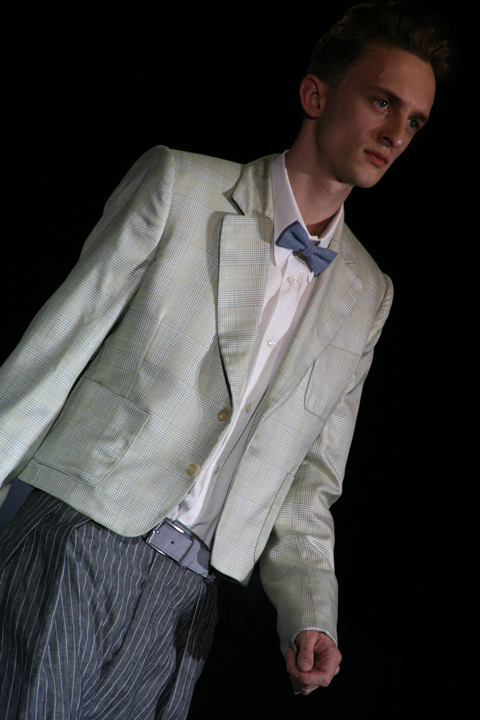

And now for a quick round of some of my favourite womesnwear collections. It’ll have to be a whistle-stop tour because I have 3 other shows to write up and I’m having my hair cut in an hour.
One of my absolute faves was Julie Perry, who combined body-concious all-in-ones with Meccano-style leather creations. These outfits had real sex appeal – not one for the supermarket but definitely for the fierce fashionista who isn’t afraid to show off. Julie’s pieces were architectural in shape and hinted at a little bit of kink.

Illustration by Julie Perry from her graduate work
Holly Farrar’s super sleek collection toyed with masculine tailoring and models had structured shoulders with outfits tapering downwards. Defined v-necklines gave the outfits an overall geometric look and were very sophisticated indeed.

Illustration by Holly Farrar from her graduate work
These gemoetric-slash-linear-slash-structured themes ran through many a collection, executed most effectively by Stephanie Price. Her futuristic collection married materials with aesthetic appeal with flattering shapes – mesh covered body-concious shift dresses had a dazzling effect, as did this dynamic jacket…


Illustrations by Stephanie Price, from her graduate work
Closing the show was Victoria Kirby, who had clearly been selected for her fresh innovation and coutourier-like craftsmanship. Elegant floor sweepers made from silk and velour had the appearance of two dresses in one, cut and merged down the middle. Exaggerating the shoulders and synching in at the waist created beautiful feminine shapes that flattered.


Illustration by Victoria Kirby, from her graduate work
All photography by Matt Bramford
 Photograph by Vanya Sacha
Photograph by Vanya Sacha
Prior to the General Election, about it Amelia’s Magazine interviewed Amisha Ghadiali about her new project Think Act Vote. As the dust settles on the birth of the coalition, this site Amelia’s Magazine caught up with Amisha to find out about the Think Act Vote Poetry competition, how to be involved with the The Future I Choose Anthology (deadline the end of September, what are you waiting for?) and to find out where Think Act Vote will be for the remaining days of summer. (Hint! 13th – 15th August finds Think Act Vote at Vintage at Goodwood, for more details read the interview!)
How did Think Act Vote spend the election night?
The night before we had our amazing Think Act Vote party at The City and Arts Music Project, where we revealed the winner of our poetry competition, with live music from the Delirium Tremens and did a Think Act Vote Photobooth.
On election day, I cast my vote and then had to pack and head to the airport. My brother was graduating from film school at NYU Tisch Asia on the Friday in Singapore so I had to choose between watching the results live or being at the graduation.
I really wanted to go to the election party at the Hub Kings Cross hosted by NEF and Future Gov, and also the Billbored party. They looked really fun. There was no live coverage on the plane!
 Showpiece by Beautiful Soul for Think Act Vote: Photograph by Dominic Clarke
Showpiece by Beautiful Soul for Think Act Vote: Photograph by Dominic Clarke
What was your desired General Election outcome?
I can’t say I had one that was possible. I was hoping there would be a more inspirational leader in the race. But under the circumstances, I was hoping for a coalition.
Why were you hoping “under the circumstances’ for a coalition?
I don’t know; there wasn’t an ideal choice there for me. I just want a progressive government. I think the real issue is our system. We need parliamentary reform, this should have happened before this election, but hopefully it has shown Westminster that the current system doesn’t work.
I would like to see a system that allows more independent candidates to get into parliament. There is an argument that this will allow too many people from the far right to get into power, but actually we proved in this election that good old fashioned campaigning can keep the far right at bay.
I think it would be exciting for our country if we had more independents, as I think there are a lot of interesting individuals out there that would be interested in standing for parliament but don’t want to join a particular party.
 Campaigns Group at Time for Tea. Photograph by Vanya Sacha
Campaigns Group at Time for Tea. Photograph by Vanya Sacha
As the hung parliament reality dawned, whilst you were in America. Were you able to follow the developments in the Lib-Lab and Lib-Con talks?
It was strange. I wasn’t watching the TV news, so was seeing it all from the internet. I would have liked to experience it here and to have taken in the atmosphere.
From far away it seemed like utter madness, in any project, you plan for different circumstances. So I did find it strange that the Lib Dems hadn’t already decided what they wanted to do if this situation occurred.
What did you think to the press coverage during the General Election Aftermath (I found the ‘squatting’ headlines referring to Gordon Brown particularly unhelpful)?
Again from a distance, it did seem like a country in chaos. That nobody had a clue what to do. But yes I agree referring the Prime Minister as squatting is never going to be helpful!
 Photograph by Deepti V. Patel
Photograph by Deepti V. Patel
What were your initial thoughts on the Con-Lib Government?
Surprise, that the Lib Dems had chosen for the country to have a Tory Prime Minister. I would have thought that this would be the last thing they would ever want to happen. But I thought it was interesting that things would have to be passed through such differing views.
As the reality of the cuts loom, have your opinions changed towards the effectiveness of the Coalition Relationship?
I think it is a bit confusing, I don’t feel like Nick Clegg and the Lib Dems have shone through in any way. It does feel more like a Conservative government. I know that we are going through a hard time at the moment with the national deficit and the recession, but they have made some cuts to things that could be really important. For example totally cutting the Sustainable Development Commission and The UK Film Council.
 Photograph by Vanya Sacha
Photograph by Vanya Sacha
Earlier this summer, you attended a Compass Conference – could you describe to Amelia’s Magazine readers the nature of these political events?
There are various political conferences that take place, I have been involved with Compass for the past four years. I used to be on the Compass youth management committee.
Compass was set up by Neal Lawson and is an umbrella organisation for progressive politics, bringing together politicians of all parties, pressure groups, trade unions, think tanks, NGOs, academics, activists, campaigners and individuals. They hold an annual conference every summer to discuss ideas.
There is an opening address in the main hall which this year had Caroline Lucas MP on the panel, and a closing address which had Pam Giddy, POWER 2010, Jon Cruddas MP & Chuka Umunna MP. There was also a Labour Leaders Debate which was quite interesting to see live.
The rest of the day is filled with smaller seminars, covering over 30 topics including Climate Change“>Climate Change, Parliamentary Reform, Tax Justice, The NHS, Feminist Issues and Poverty.
It is an opportunity to think through alternatives to the ways problems are currently being tackled, have open discussions, ask questions and be inspired.
 Photograph by Maciej Groman
Photograph by Maciej Groman
What are Think Act Vote’s recommendations for making your vote count everday?
It is just about thinking about what is important to you, and finding ways to take action and get your voice heard. Whether that is through supporting campaigns, or thinking twice about what you spend your money on.
If you haven’t yet, a good place to start is by contributing to our book. Ask yourself the question – What is The Future You Choose?
You might just give yourself the answer of what to do next..
You can read some examples and contribute online.
What are Think Act Vote plans for the rest of the summer?
More, more, more. We have been doing Think Act Vote Photobooths, and running around music festivals taking photos and getting people to take part. So we are going to carry this on until the end of September.
 Ethical Fashion Green Sunday. Photograph by LUDOVIC DES COGNETS.
Ethical Fashion Green Sunday. Photograph by LUDOVIC DES COGNETS.
Where can you find out about the Photobooth events?
We do these events often, keep your eyes on our facebook page and the events page on the Think Act Vote website. Apart from the festivals, we are planning various other venues around London over the next seven weeks.
We are trying to find interesting venues, like the Union Street Orchard for example.
The release date for the The Future I Choose anthology has been delayed, what were the reasons behind this decision?
We had such a great response and more than enough content to publish the book straight after the election, but thought it made sense to get more people to take part over the summer.
Also we didn’t want to send out the message that you only get a choice in The Future You Choose in the run up to an election, because the whole point of our campaign is that you get that choice every day.

Playsuit by Tara Starlet for Think Act Vote: photograph by Dominic Clarke
Have you been working with new fashion designers since Amelia’s Magazine interviewed you? I see the blog mentions: Nancy Dee and Miksani?
We have been sharing on our site the full stories of the Think Act Vote Refashioned pieces, and in some cases instructions on how to make them.
The designers that took part were Ciel, Ada Zandition, Nancy Dee, Miksani, Junky Styling, TRAIDremade, Beautiful Soul and Tara Starlet. Other designers really wanted to take part but couldn’t at the time as they were out of the country, we might get them to do a little something.
The MA students on the Fashion & The Environment project at London College of Fashion are working on something for us now, which we can’t wait to see!
 Photograph by Deepti V. Patel
Photograph by Deepti V. Patel
What does the Think Act Vote campaign mean after the election?
Although inspired by the election, the campaign was never about voting in the election. It is about understanding that everyday we all express the future we choose by how we spend our time, money and energy. It’s about inspiring ourselves and others to live a life that reflects what we actually want from our future when we stop to think about it.
The ‘Vote’ is ours, it is about taking that word away from politicians as something we give to them every four years. About us not being afraid to use political language in our every day lives in a positive way.
I know that having Vote in the campaign name has put many people off it, and even a lot of my friends have thought it was about voting in elections until I explained that.
But I think it is important to be aware that everything we do is political and that every day we make choices that shape our world.
 Photograph by Deepti V.Patel
Photograph by Deepti V.Patel
Olivia Sprinkel, Winner of the poetry competition was announced on the night of the Think Act Vote Party, How was this decision made?
The poetry competition was judged by John Bird and Shane Solanki. The shortlist was read out at the party and went down really well.
Even though the competition is over, everyone is still welcome to answer our question – What’s The Future You Choose with a poem. It might end up in our book!
What’s next for Think Act Vote?
We are really excited about Vintage at Goodwood this weekend! We are doing Think Act Vote Refashioned workshops in the sustainability area where you can make your very own Think Act Vote Refashioned Dress. We will also be doing photoshoots, meet us outside our tent after our workshops.
I am also doing a talk in the talk tent on ethical fashion and creative activism.
This weekend (13th – 14th August 2010) finds Think Act Vote participating in Vintage at Goodwood’s, Sustainable Design Workshops. Find the the Think Act Vote team at 11-1 and 3-6 on Friday and between 1-4 adn 4-7 on Saturday and Sunday.
NB: sadly we can’t attend to report on this workshop: read more about why here.
From the Think Act Vote Team:
“It is an invitation for you to take part in Think Act Vote Refashioned. You can make your very own Think Act Vote one off piece and then have it photographed to be in our book, as well as a post online about how you went about your customisation.
You will be in very capable hands as the workshops will be led by Laura Metcalf and Alison Lewis who met on set of a channel 4 television pilot, they have been working together most recently on alterations and repairing vintage clothes at Clerkenwell Vintage Fair in London.”
Amisha Ghadiali will be interviewed by Leonora Oppenheim about Ethical Fashion and Creative Activism at 5pm on Saturday in the Talk Tent. This is an event not to be missed!
What’s the Future You Choose?

Illustrations by Jenny Robins
If you are visiting Windsor this Summer, pharmacy and I really think you should because it’s got everything: Nando’s, drug Wagamama, drugs a Castle – no really, it’s really pretty. Pretend you are posh, or a tourist. If you are posh, pretend to be a tourist, and vice versa. A nice day trip away from the city; a nice daytrip towards the city, but not quite too the city. If you live West.

Anyway, if you are visiting Windsor this Summer, be sure to stop in to the Mill House café and look at the really lovely Fragments exhibition put together by the superstar curatorial team Two Magpies Find. It’s on the left as you walk away from the Castle down Peascod Street, opposite Ben & Jerry’s. The show is up till the end of August.
Ok, this exhibition in question does include a lot of my work, so this is a bit self serving (insider’s perspective, Amelia said) but I don’t want to talk about that too much (although I will mention that the WHOWHATWHEREWHENHOW owl series is available as a limited edition postcard set – I’m only human). I wrote a big thing about me and why I paint birds for their local Beat magazine off the back of Fragments, so please feel free to go read that. I like birds, you like birds, we like birds, I paint birds, fly bird fly, etc.
But seriously, it’s all about the birds, kids. Edward Bawden used to say that the secret to selling paintings was to put cats in them wherever possible. Plenty of art lovers still love cats, that’s still a cliché. But in the last few years, particularly, it seems drawing birds is a strong contender. Just look at the fabulous Jo Cheung and Abi Daker’s birdtastic background for this very website. Birds are so beautiful and varied, they burst with life. There’s a special contained freedom to them that must appeal to the creative soul.

Ali and Anna of Two Magpies Find
“I’m obsessed with birds too!” Ali of TwoMagpiesFind told me soon after we first met. It’s not surprising since she is a Magpie herself, wearing a golden bird-table necklace, echoing the lovely birdhouse illustration advertising their next exhibition theme “Home” (email entries here.) The pair met at the Firestation – a local arts centre where Anna works and Ali volunteers – and plan to expand their gallery work both locally and in other areas. Projects like this are so important, where independent venues work together with creatives to organise events that benefit locals and artists alike. Artists often live a magpie existence, ever courting serendipity. We need to support each other and keep on collaborating and getting involved with small projects. It can make the world of difference.

As well as my varied bird paintings, the show brings together Magpie finds illustrator and publisher Dan Prescott of Lazy Gramaphone, who’s intricate designs are both striking and absorbing, beautifully presented as perfect quality Giclée prints, and painter Zita Saffrette, whose landscapes are so full of light and air you’d think they were backlit. In addition the Magpies have displayed some of their own work –beautifully printed photographs exploring stark white juxtapositions on natural scenes (my favourite is of a wedding dress draped across a field), intricate nature paintings and a really striking screen print of two toy horses blown up to poster size.

The café itself is a stunning space, much bigger and brighter on the inside than you would know from the street. It used to be a Puccino’s and still retains the SHUT HAPPENS door signs (I love them). Multicoloured teapots and vases circle the top of the room, making the whole space seem almost that real-estate oxymoron – cosy yet spacious.
May these birds keep flying high into blue skies, and may all arty birds (of a feather) the land over keep on painting those feathered friends.
Written by Jenny Robins on Friday July 9th, 2010 11:14 am
Categories ,Abi Daker, ,art, ,Beat Magazine, ,Ben and Jerry’s, ,birds, ,Dan Prescott, ,Edward Bawden, ,Firestation, ,Fragments, ,Home, ,illustration, ,Jenny Robins, ,Jo Cheung, ,Landscapes, ,Lazy Gramaphone, ,Magpies, ,Mill House Café, ,Nandos, ,Two Magpies Find, ,Wagamama, ,WhoWhatWhereWhenNow, ,Windsor, ,Windsor Castle, ,Zita Saffrette
Similar Posts:
 The Average Day, Photograph by Chris Overend
The Average Day, Photograph by Chris Overend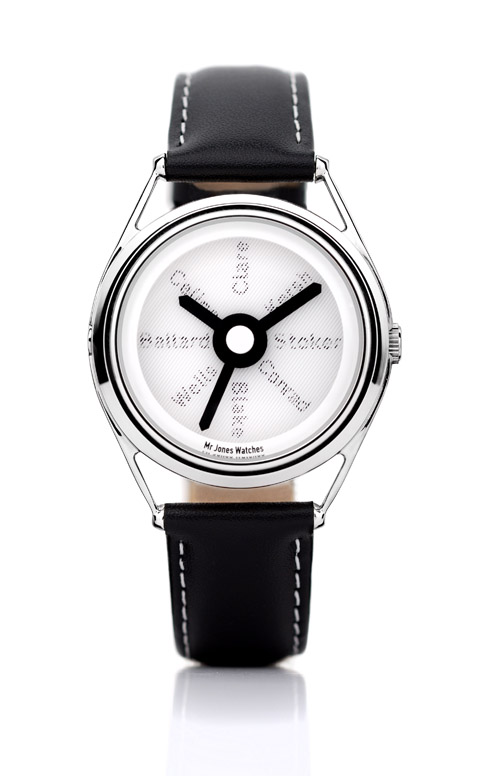 Compass Road by Iain Sinclair and Mr Jones Watches
Compass Road by Iain Sinclair and Mr Jones Watches The Last Laugh by William Andrews and Mr Jones Watches
The Last Laugh by William Andrews and Mr Jones Watches The Average Day, Photograph by Chris Overend
The Average Day, Photograph by Chris Overend Compass Road by Iain Sinclair and Mr Jones Watches
Compass Road by Iain Sinclair and Mr Jones Watches The Last Laugh by William Andrews and Mr Jones Watches
The Last Laugh by William Andrews and Mr Jones Watches The Average Day, Photograph by Chris Overend
The Average Day, Photograph by Chris Overend Compass Road by Iain Sinclair and Mr Jones Watches
Compass Road by Iain Sinclair and Mr Jones Watches The Last Laugh by William Andrews and Mr Jones Watches
The Last Laugh by William Andrews and Mr Jones Watches





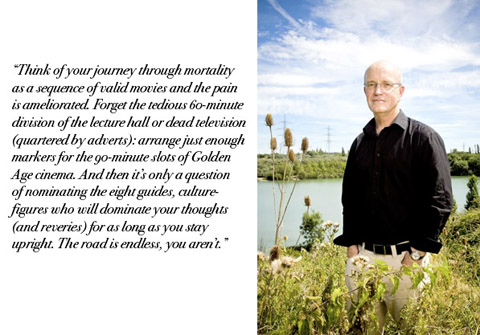












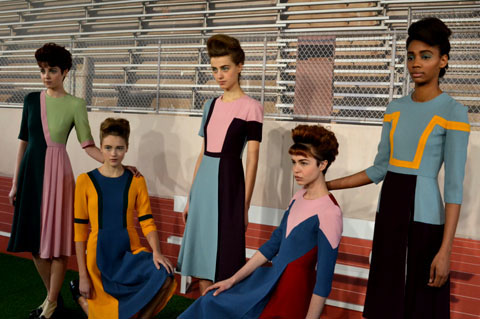























































































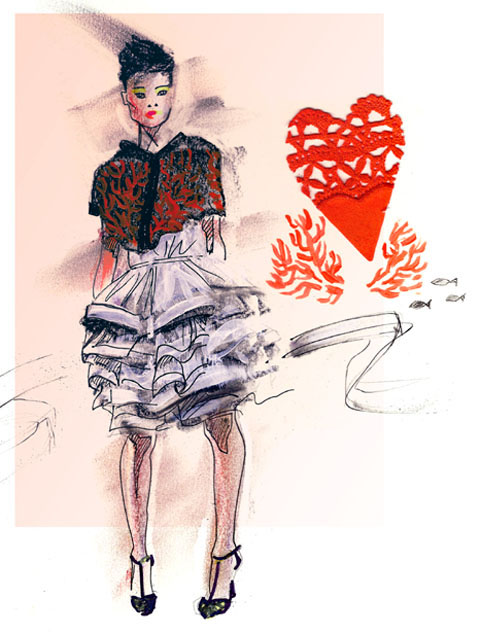
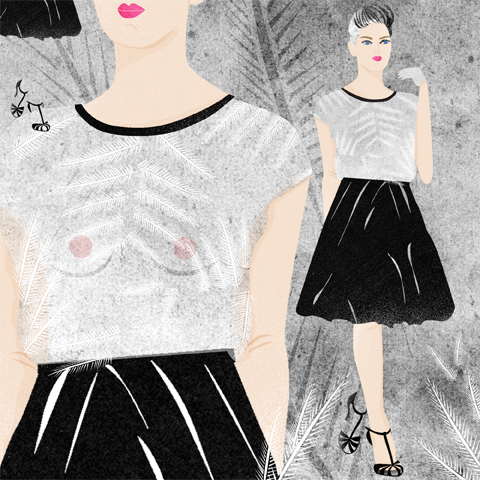
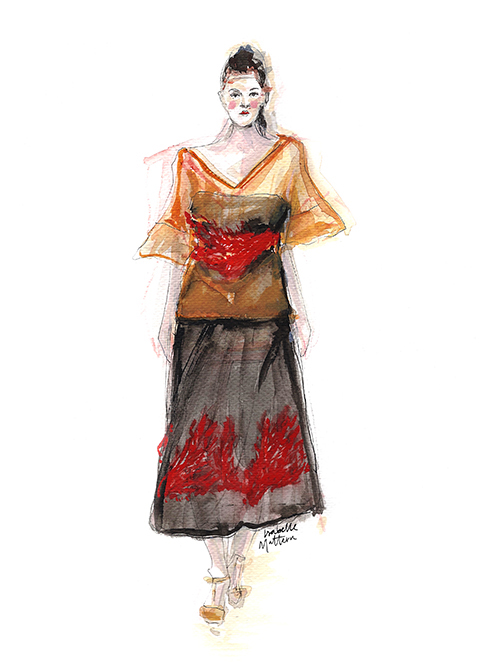




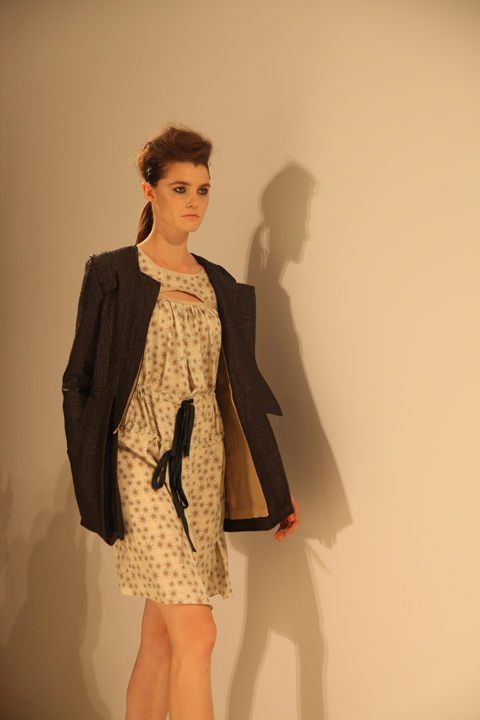

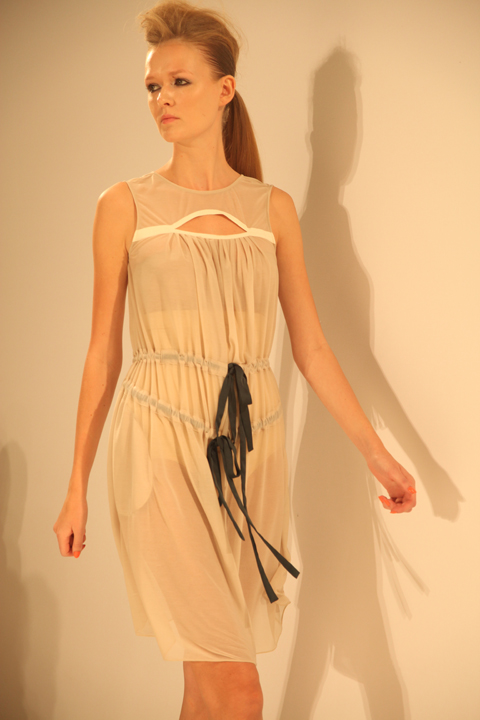




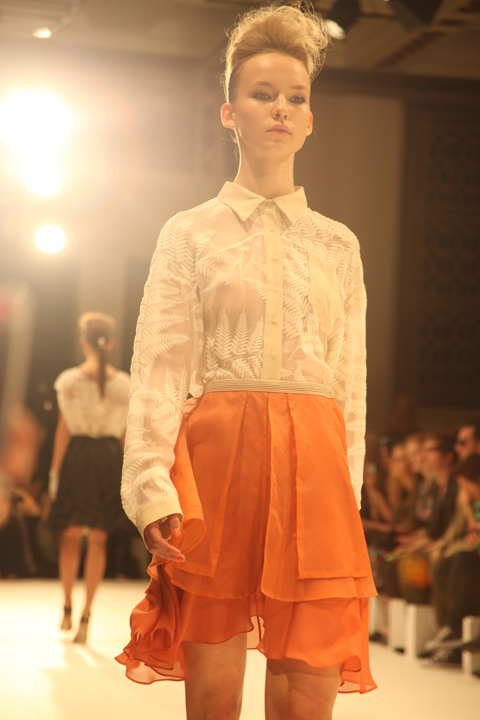
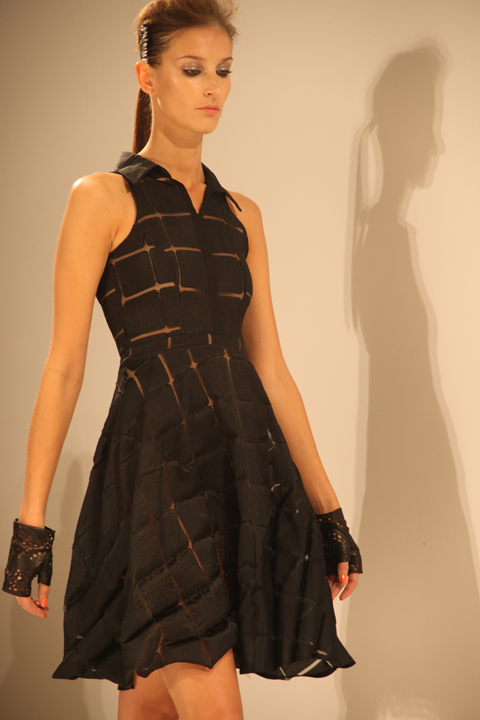







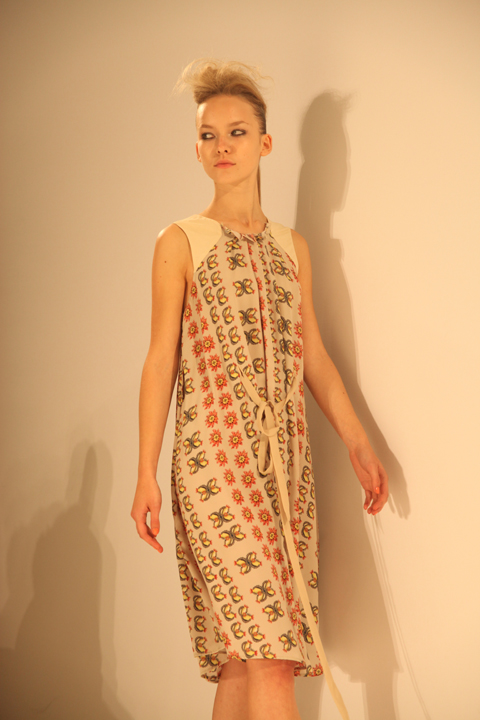
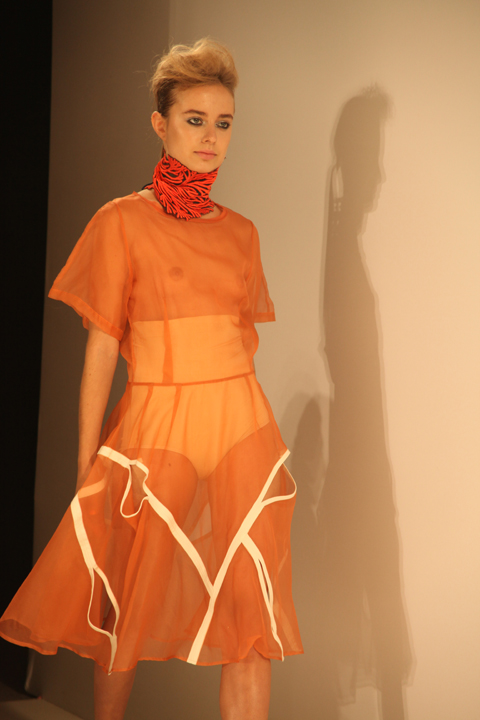
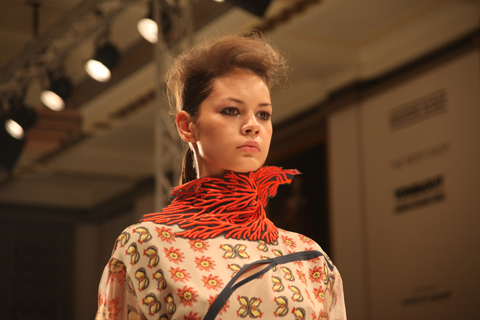


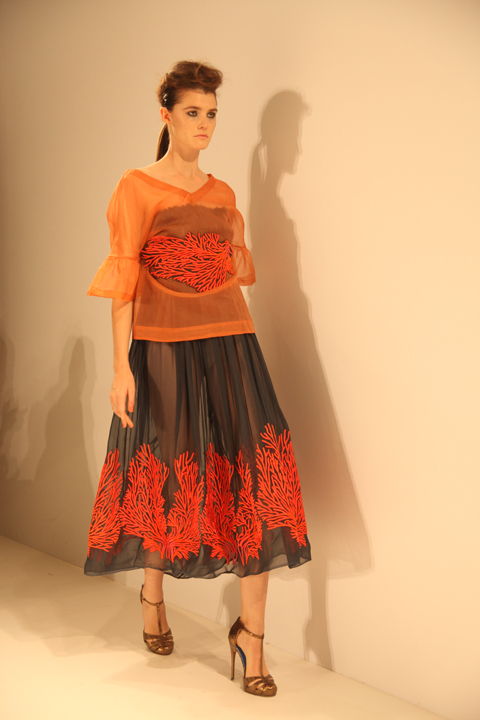


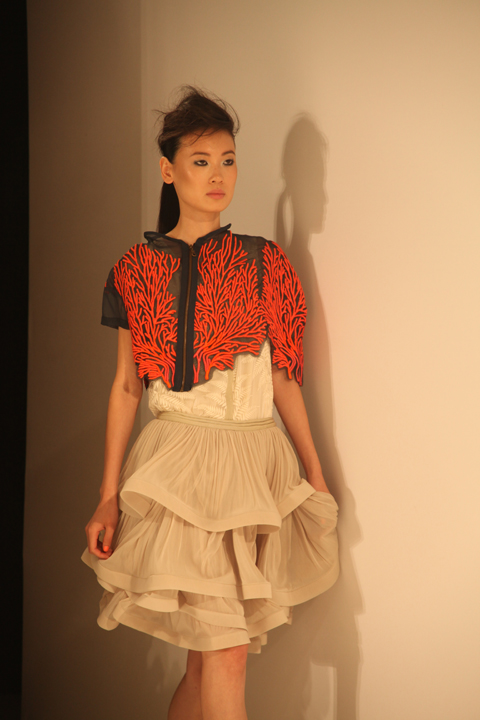

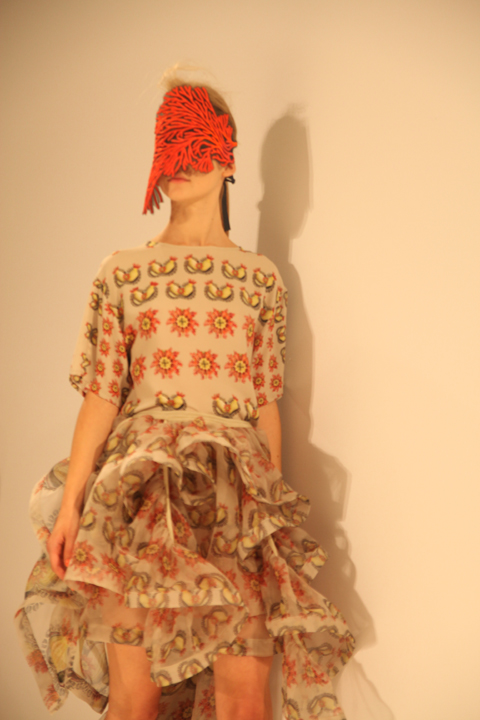


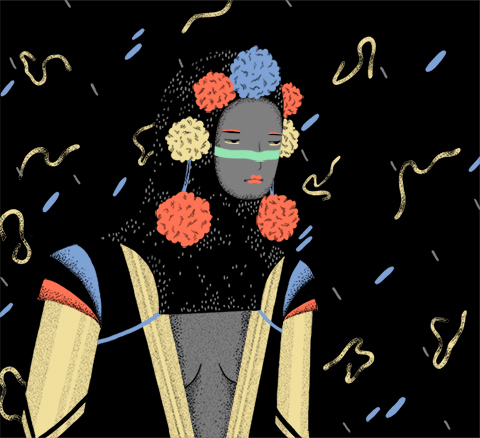


























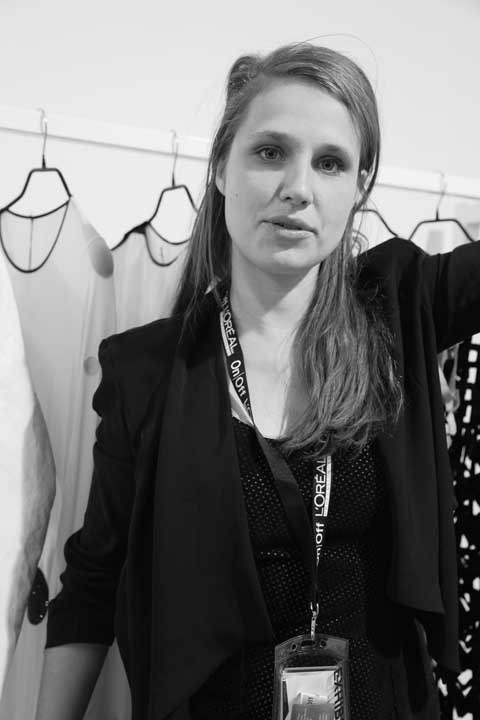
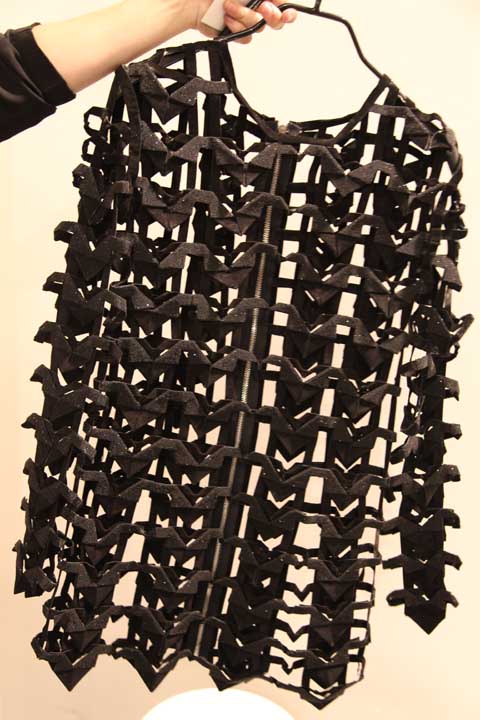


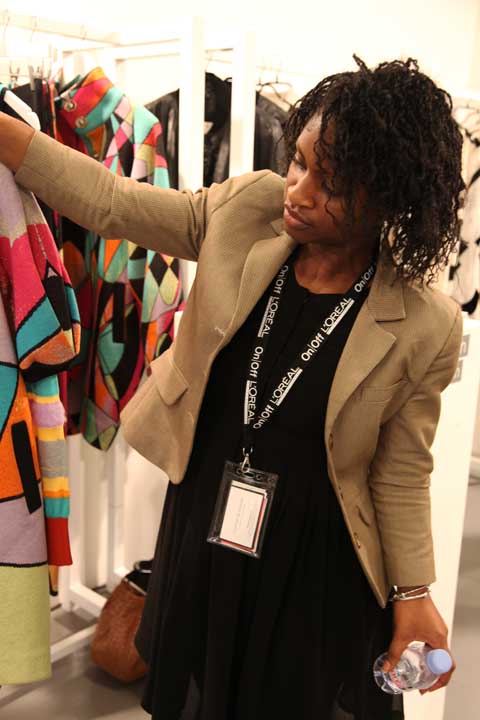


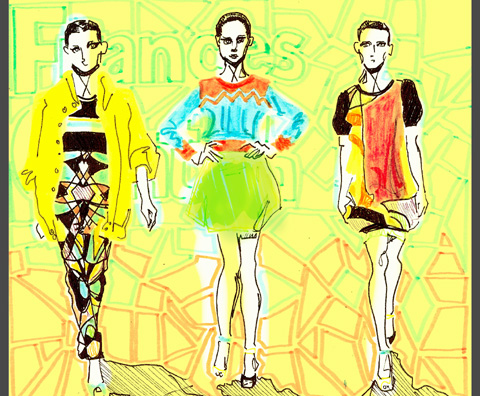
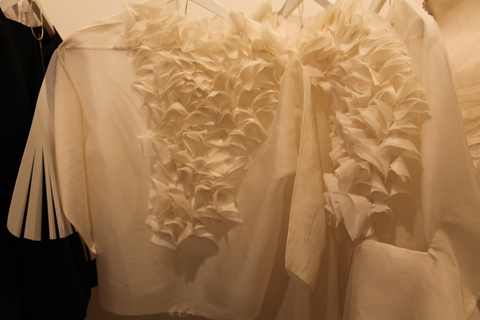
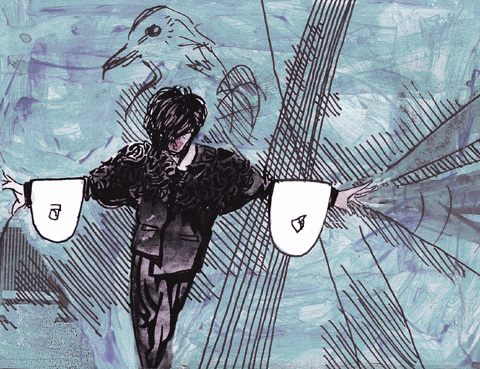












![Anja_Maklar_by_Madi[1]](http://www.ameliasmagazine.com/wp-content/uploads/2011/02/Anja_Maklar_by_Madi1.jpg)
































